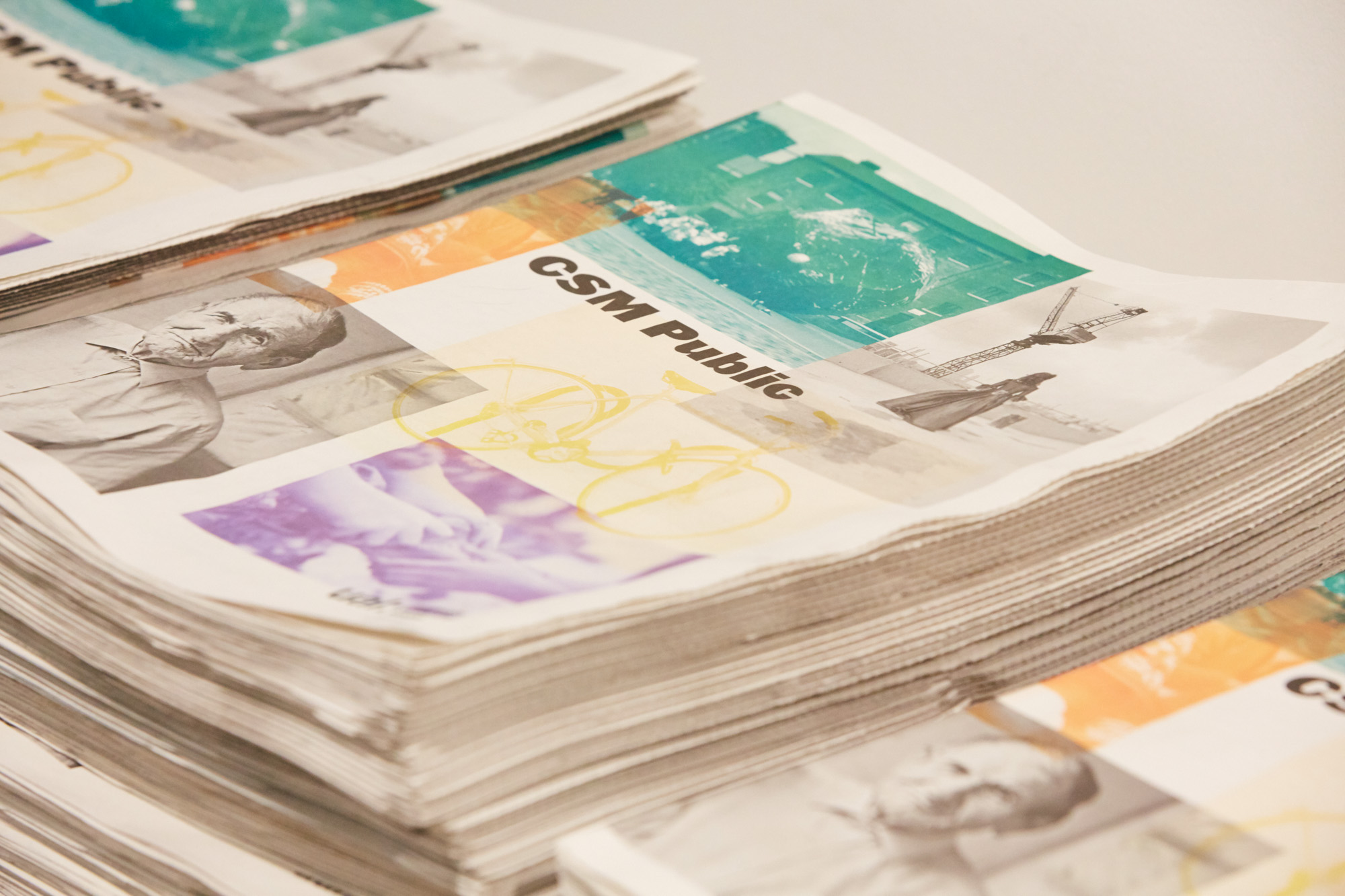Last night Central Saint Martins celebrated the launch of CSM Public with ‘Art, Design and the Common Good’, an evening of debate and exhibitions exploring how art and design schools can be agents for social change.
The date was chosen to coincide with the start of the Lumiere London festival and the opening of several CSM exhibitions: WE ARE OPEN, Graffolution, Public Collaboration Lab and the Innovation and Business Showcase.
The evening began with six minute presentations from a diverse panel addressing the question ‘How can art be an agent for social change?’
- Mullen Lowe Group’s president Jose Miguel Sokoloff highlighted how in his native Colombia, Guerillas involved in ongoing conflict had been inspired to return home by artistic interventions including messages spelled out in Christmas tree lights and floating balls containing personal messages and childhood photographs.
- Head of UK Government’s Policy Lab Andrea Siodmok discussed how design functions as deviant, variant, militant and irritant.
- Artist Faisal Abdu’Allah told a personal account of the impact of image on his childhood self to illustrate its effect on self-identification followed by examples of his work as both an artist and a barber, collaborating, storytelling and challenging in ways which demonstrate how ‘artists are the shapers of social consciousness’.
- Designer Morag Myerscough’s work with various communities explored themes of belonging and ownership, showing how ‘collaboration with pupils means the school belongs to them’.
- A film interlude of an extract from Andrea Zimmerman’s film ‘Estate, A Reverie’
- Adam Thorpe, Designer and Professor of Socially Responsive Design and co-founder of Vexed Generation brought things back to the political, featuring the game ‘Frackman’ a web game to raise awareness about fracking and ‘Red Lines are not for Crossing’ – artistic interventions protesting on climate change issues to protect the environment.
- Architect Sarah Featherstone gave examples of how architects can ‘open up possibilities for social change’ including the Royal Festival Hall, the Byker Estate and using an ‘emotional map’ to influence the design of crisis centre.
- CSM’s Fine Art Programme Director and Fine Artist Alex Schady shared examples from some of his workshops of children wearing masks they’d created saying ‘he made me do it’ to draw attention to the idea of manipulating behavior and stimulating creativity to make something together.
This was followed by a panel discussion featuring all the speakers and chaired by Head of CSM Jeremy Till who posed questions including ‘does art as social engagement shift the notion of authorship? before opening up to a Q&A with the audience.
Invited guests then continued the conversations over drinks and bowls of food in the Lethaby Gallery before spilling out into Granary Square in all its Lumiere London illuminated glory.
Images by Simon Way.
More:


















